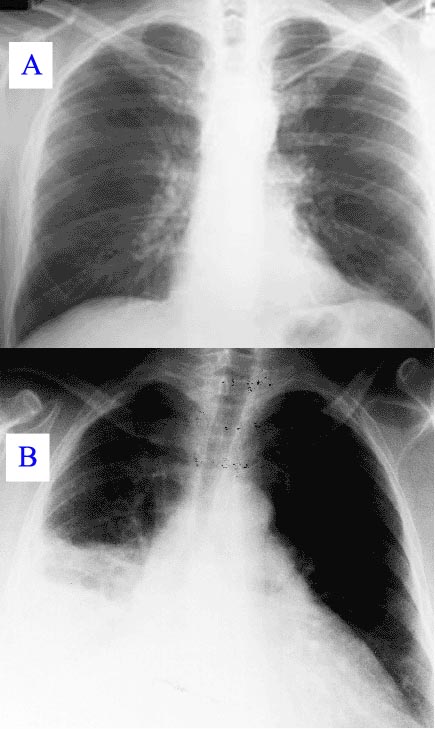Q fever historical perspective: Difference between revisions
(Created page with "{{CMG}} {{Q fever}} ==Overview== '''Q fever''' is caused by infection with ''Coxiella burnetii''. This organism is uncommon but may be found in cattle, sheep, goats and o...") |
|||
| Line 4: | Line 4: | ||
==Overview== | ==Overview== | ||
'''Q fever''' is caused by infection with ''[[Coxiella burnetii]]''. This organism is uncommon but may be found in cattle, sheep, goats and other domestic mammals, including cats and dogs. | '''Q fever''' is caused by infection with ''[[Coxiella burnetii]]''. This organism is uncommon but may be found in cattle, sheep, goats and other domestic mammals, including cats and dogs. | ||
== History == | |||
[[Image:Pneumonia_x-ray.jpg|right|thumb|''Image A'': A normal [[chest X-ray]]. ''Image B'': [[Q fever]] pneumonia.]] | |||
It was first described by Edward Holbrook Derrick in abattoir workers in Brisbane, Queensland, Australia. The "Q" stands for “query” and was applied historically at a time when the causative agent was unknown. | |||
In 1937 the bacterium was isolated by Frank Macfarlane Burnet and Mavis Freeman from one of Derrick’s patients for the first time and identified as ''[[Rickettsia]]''-species. H.R. Cox and Davis isolated the [[pathogen]] from [[tick]]s in Montana, USA in 1938, called it ''Rickettsia diasporica'', it was considered nonpathogenic until laboratory investigators were infected; it was officially named ''[[Coxiella burnetii]]'' the same year. It is a zoonotic disease and most common animal reservoirs are cattle, sheep and goats. ''Coxiella burnetii'' is no longer regarded as closely related to [[Rickettsia]]e. | |||
==References== | ==References== | ||
Revision as of 15:08, 2 February 2012
Editor-In-Chief: C. Michael Gibson, M.S., M.D. [1]
|
Q fever Microchapters |
|
Diagnosis |
|---|
|
Treatment |
|
Case Studies |
|
Q fever historical perspective On the Web |
|
American Roentgen Ray Society Images of Q fever historical perspective |
|
Risk calculators and risk factors for Q fever historical perspective |
Overview
Q fever is caused by infection with Coxiella burnetii. This organism is uncommon but may be found in cattle, sheep, goats and other domestic mammals, including cats and dogs.
History

It was first described by Edward Holbrook Derrick in abattoir workers in Brisbane, Queensland, Australia. The "Q" stands for “query” and was applied historically at a time when the causative agent was unknown.
In 1937 the bacterium was isolated by Frank Macfarlane Burnet and Mavis Freeman from one of Derrick’s patients for the first time and identified as Rickettsia-species. H.R. Cox and Davis isolated the pathogen from ticks in Montana, USA in 1938, called it Rickettsia diasporica, it was considered nonpathogenic until laboratory investigators were infected; it was officially named Coxiella burnetii the same year. It is a zoonotic disease and most common animal reservoirs are cattle, sheep and goats. Coxiella burnetii is no longer regarded as closely related to Rickettsiae.